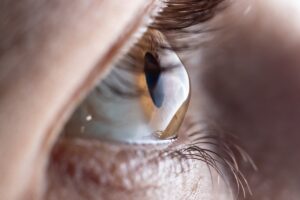
The clear front part of your eye is called the cornea. A healthy cornea is dome shaped. It plays an important role in protecting your eye and refracting light onto the back of your eye to produce clear visions. Issues with the cornea can impact your vision.
Keratoconus is a progressive corneal disease. It occurs when the cornea thins and bulges into a cone shape. This shape causes light to incorrectly focus on the back parts of the eye, which can result in blurred and distorted vision.
The past 20 years have been an exciting time for keratoconus treatment. Here, our ophthalmologists at Mack Eye Center will go over how keratoconus treatment has improved in recent years.
Improved Screening and Diagnosis
There is still a lot to learn about keratoconus. However, over the past 20 years physicians have improved the screening process and diagnostic tools used for keratoconus. Research continues to give insight into the disease.
Technology has greatly improved in the past few decades. Corneal topography is the primary tool used to diagnose keratoconus. This is a computer-assisted instrument that creates a three-dimensional map of the surface curvature of the cornea. This method has been improved with the supplementation of a pachymeter, which measures the thickness of the eye’s cornea, revealing early signs and progression of the disease.
Improved Treatment Options
In addition to screening and diagnosis, treatments for keratoconus have also improved in recent years. Traditional treatment options for keratoconus included prescription eyeglasses, contact lenses and corneal transplants. Those treatment options are still available to patients. However, patients now have additional treatment options including INTACS and collagen crosslinking.
INTACS
INTACS have been recently approved by the U.S. Food and Drug Administration (FDA) for the treatment of keratoconus. INTACS are small, semi-circular implants that are placed within the cornea to reshape the cornea. INTACS can be combined with eyeglasses, contact lenses and collagen crosslinking.
Collagen Crosslinking
Collagen crosslinking is an in-office procedure that stabilizes the cornea. It combines riboflavin drops and ultraviolet light to strengthen the collagen fibers in the cornea.
What Will the Next 20 Years Bring?
The past 20 years have changed the ways that doctors and physicians diagnose and treat keratoconus. Perhaps the next 20 years will bring even more advancements to the medicine and technology behind keratoconus treatment.
Schedule Your Keratoconus Consultation Today
You don’t have to live with keratoconus symptoms. Reach out to the trusted team at Mack Eye Center to schedule your keratoconus consultation today.

